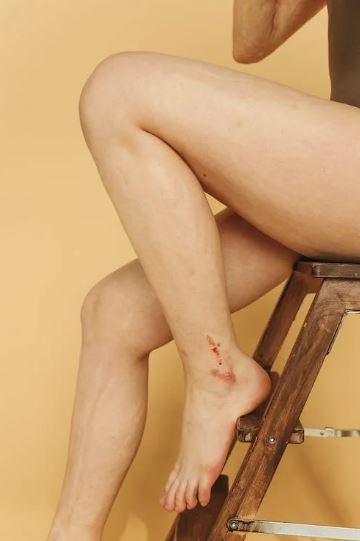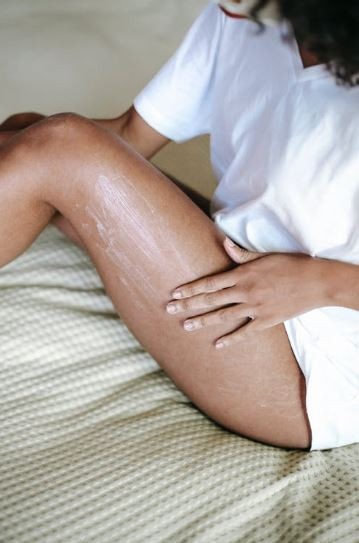Is there a part of your leg that you keep scratching incessantly? You may become awake in the middle of the night by itching, which can eventually lead to anxiety and depression. There are numerous causes of itchy legs. Some things, like having dry skin in the winter or wearing rough clothes, are just a few causes of itchy legs.
NOTE: Always consult with your doctor for on-going medical issues.
Common Causes of Itchy Legs
1. A Sign of Diabetes
Diabetes can cause various issues, such as pruritis, which is the medical word for particularly itchy skin. If you have diabetes, your itchy legs could be caused by:
- Elevated blood sugar. This may result in dehydrated skin that makes you want to scratch.
- Poor blood flow. Poor circulation, common with diabetes, can also result in itching legs.
- Nerve injury (neuropathy). The common signs of diabetic nerve damage include pain and numbness; however, some people also have a neuropathic itch. Diabetes of either type 1 or 2 frequently results in kidney damage, and a persistent itch is one sign.
2. Symptoms of Specific Illnesses
Itchiness could indicate a dangerous illness that you may or may not be aware of having, such as:
- Lymphomas. Patients with Hodgkin’s lymphoma and cutaneous T-cell lymphoma frequently experience itching.
- Cutaneous cancer. Often, a patch on your skin is the only indication that you have this malignancy. It can be fresh or a mole that has changed in size or shape. Itches can occasionally occur, which is why you might notice them.
- A severe kidney condition. An itch is a typical sign of renal failure and the need for dialysis, even if your disease is unrelated to diabetes.
- Liver illness. Does the itching begin on the palms of your hands or the bottoms of your feet before spreading? Your liver could be malfunctioning. You might have cirrhosis or a bile duct blockage. Itchy skin is a side effect of viral hepatitis C, which causes liver inflammation.
- Thyroid condition. Another probable explanation for itchy skin is thyroid issues. Chronic hives may occasionally result from thyroid illness. These appear as variable, elevated, itchy, red, or skin-colored spots.
3. Allergic Reactions
Look closely at your scratchy legs. Is the reason they’re red that you’ve scratched them, or do they have a rash? Itchy rashes are a sign of contact dermatitis, an allergic skin response to the following substances: Nickel is found in many metals, including zippers, fragrances, shampoos, laundry soaps, and fabcons.
4. Reactions to Medications
An itch can occasionally be a side effect of the medicine. It frequently occurs, especially with opioid drugs. Usually, these medications’ itching doesn’t accompany a rash or hives. Specific cancer treatments also bring on the sensation. Skin symptoms could be brought on by these medications or not.
Simple Ways of Reducing Leg Itchiness
1. Apply hypoallergenic body lotion.
If you have dry skin, use a hypoallergenic body lotion on your legs. In a circular motion, rub the cream into your skin. After shower or bath, in the morning, before you get out of bed, and at night. Use an aloe-containing lotion to relieve itching if your legs itch before night. To prevent the cream from getting on your sheets, let your skin a few minutes to breathe before climbing beneath the covers.
2. Apply the suitable essential oils.
Both coconut oil and grapeseed oil are effective at hydrating dry skin. If your legs are itchiest, try applying a tiny bit of the oil there. Plant oils can soothe your dry skin because they are excellent moisturizers. Many plant oils are also anti-inflammatory and anti-bacterial, so they might hasten to heal and stop itching if you’re irritated. You can also experiment with oat and almond oil to soothe your itching legs.
3. Consider exfoliation instead of shaving.
Use an exfoliator to stop and treat razor burn after shaving. The cause of persistent itching on your legs after shaving may be a razor burn. Before shaving, purchase an exfoliating cream or gel and apply it to your skin. After thoroughly rinsing it off, shave using shaving cream and a pair of pointed blades. Removing the dead skin cells with an exfoliant can avoid razor blade clogging and excessively rough shaving. Sharper, more recent blades are less likely than duller blades to nick your skin and give you razor burn.
4. Use an itching cream.
For an allergic reaction, apply an over-the-counter anti-itch cream. Visit your neighborhood pharmacy, grocery, or cheap store to get an anti-itch cream. Use warm water and mild soap to wash your skin gently, then pat it dry. Over the rash, apply the anti-itch lotion evenly. Avoid scratching itchy rashes because doing so might spread the irritant and exacerbate the rash. If necessary, wrap the rash with gauze or a bandage to prevent scratching.
5. Apply a steroid cream topically.
Use this for insect bites, plant allergies, or detergent contact dermatitis. Next, apply a topical steroid, such as a cream with 1 percent hydrocortisone, whenever a red mark or welt is visible. For 5-7 days, you can apply the cream up to four times daily. To relieve itching and promote sleep, take oral diphenhydramine, like Benadryl. Like Claritin, loratadine can lessen allergy symptoms while keeping you from becoming fatigued during the day. Topical steroids can also aid in reducing itching caused by poison ivy and grass allergies.
6. Change the detergent in your washer.
For dermatitis, use a laundry detergent suited for delicate skin. To determine if there is anything in the laundry detergent’s ingredients that you are aware of and to which you have previously experienced an adverse response, check the label. Your clothes are kept clean without causing skin irritation with a natural detergent with no other odors or dyes. Leg itching from washing your garments in harsher detergents is possible, especially if you’re actively participating in an activity. Chemicals from the fabric you might not ordinarily notice can be released when you sweat.
7. Install a humidifier.
You can keep your skin moist by raising the humidity level in your home. Place the humidifier in your home that is the driest or in the room where you spend the most time. Your skin becomes dry from the dry air in your home, which might itch your legs. Your home’s relative humidity will rise thanks to a humidifier, keeping your skin soft.
8. Be more mobile.
If your legs itch when you lie down to sleep, get up and walk around. Get up and take a short stroll if your legs begin to relax or itch after remaining still. Usually, doing this can assist your legs to relax a little bit so you can truly unwind. If this frequently occurs while you’re sleeping, especially when you’re about to do so, you may have restless legs syndrome. Consult your doctor about your symptoms, and they will develop a treatment plan based on potential root causes.
9. Make changes to your medication.
Ascertain whether itching is a pharmaceutical adverse effect. Any drug you are taking should have common adverse effects listed online. You might also ask by giving your doctor a call. You may experience itching while taking some medications, especially opioid painkillers with prescription strength and blood pressure meds. Your doctor will recommend a different prescription that offers the same benefit without the unwelcome side effect if the itch you’re experiencing is a side effect of a medication you’re taking. Sometimes a side effect cannot be avoided, or there is no equivalent medication to replace it. Please consult your doctor for advice on how to stop the itching and make it less irritating.
10. Consult a medical professional.
If you experience itching without a rash, ask your doctor to do a diabetes test. When there is no rash or other apparent cause for the itching, especially in your lower legs, it may indicate diabetes. Your doctor can check your blood sugar levels to determine whether diabetes may be the root of your itching.
Conclusion
Some remedies for itching can signify that a scar is healing. These actions might lessen itching, such as rubbing the spot and keeping it hydrated. Consult your doctor about alternative possible therapies if over-the-counter drugs cannot reduce the discomfort.
The best strategy to treat and prevent scars is to take good care of your wounds and promote the skin’s natural healing process. Home cures are unlikely to eradicate older, existing scars, although they may slightly enhance their appearance. For more aging spots, medical and cosmetic procedures may be more effective for aging spots, although results might vary greatly and depend on several circumstances. If people are worried about leg scars or want to learn more about the possible treatments, they should talk to their doctor.







